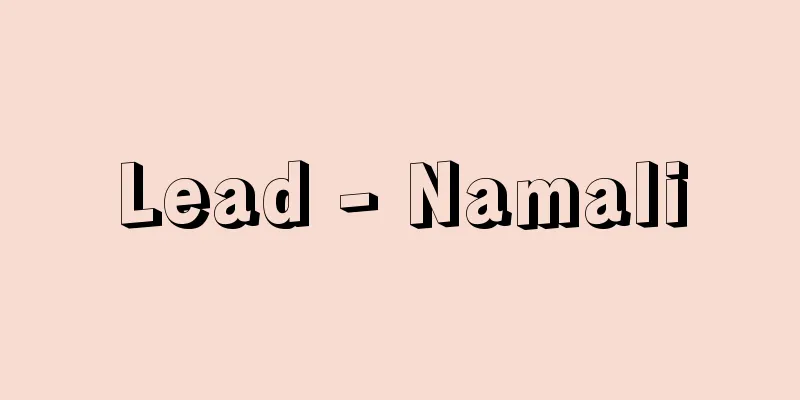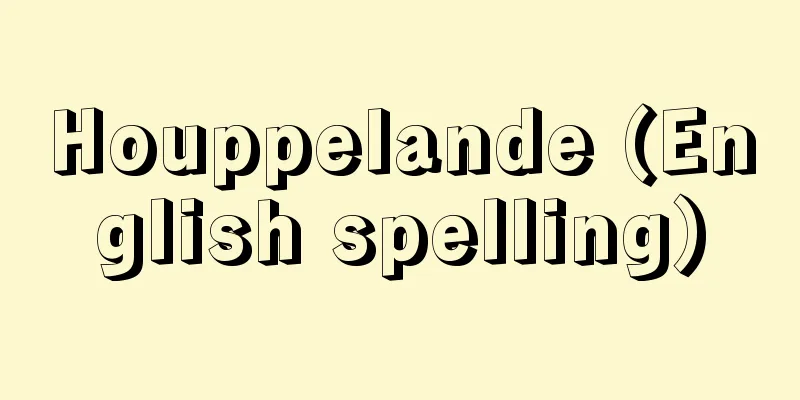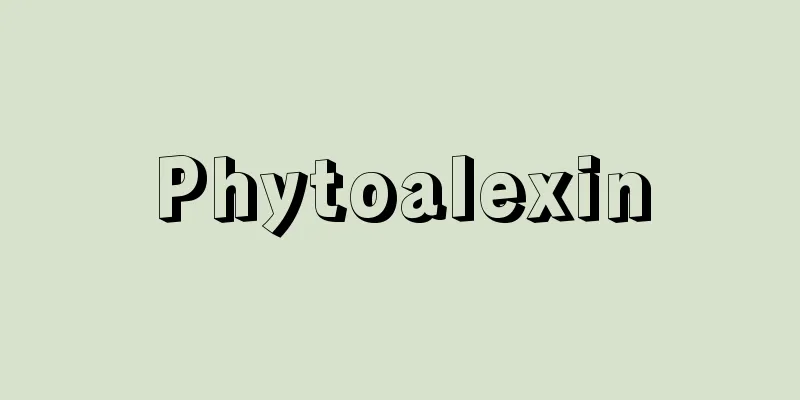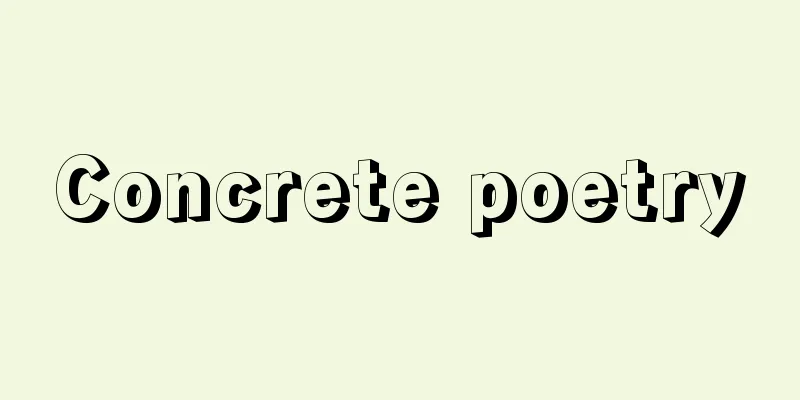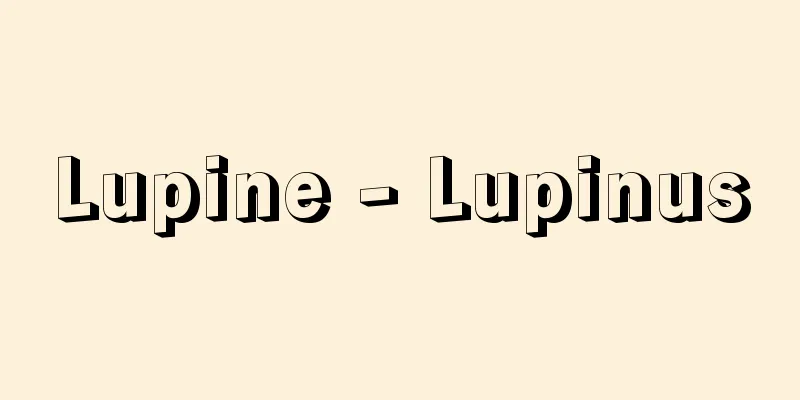|
Pb. Atomic number 82. Electron configuration [Xe] 4H145d106s26p2 . Metallic element in group 14 of the periodic table. Atomic weight 207.2(1). The symbol is from the Latin name "plumbum". In his book "Semi-kaisou" published in 1837, Udagawa Yoan gave the element the name plumbum-hume. A metal known since ancient times, it appears in the Old Testament (Exodus). Medieval alchemists tried to turn lead into gold. The natural isotopes 204Pb 1.4(1)%, 206Pb 24.1(1)%, 207Pb 22.1(1)%, and 208Pb 52.4(1)% exist. As a radioactive nuclide, many isotopes are produced with mass numbers between 178 and 215. 202 Pb has a half-life of 22,500 y (alpha decay), and 210 Pb is in the uranium series (classical name RaD) and has a half-life of 22.2 y (beta decay).
It occurs as galena (PbS), cerussite (PbCO 3 ) , pyrite (PbSO 4 ) , and crosite (PbCrO 4 ) . Its abundance in the earth's crust is 8 ppm. Lead is found in Australia, the United States, and China, which account for 50% of the world's mineable reserves (67 million tons). Lead accounts for 60% of the total reserves (140 million tons). Lead has a high recycling rate, and the production of lead bullion from recovered lead-acid batteries, cathode ray tubes, etc. reached 3.5 million tons worldwide in 2005, accounting for 47% of the total production. It is a shiny bluish-white metal. The metal is obtained by roasting sulfide ores to produce lead oxide (PbO) and reducing it with carbon or iron, or by electrolysis from recovered waste lead-acid batteries to produce electrolytic lead. Its melting point is 327.43°C, and its boiling point is 1749°C. It becomes superconducting at 7.196 K. Density: 11.340 g cm -3 (20 °C). Specific heat capacity: 26.4 JK -1 mol -1 (20 °C). Linear expansion coefficient: 2.924 x 10 -5 K -1 (40 °C). Electrical resistance: 2.08 x 10 -7 Ω m (20 °C). Thermal conductivity: 0.351 J cm -1 s -1 K -1 (20 °C). The crystal structure is a regular face-centered cubic lattice. α = 0.49396 nm (18 °C). Standard electrode potential: Pb 2+ + 2e - = Pb - 0.126 V. First ionization energy: 715.4 kJ mol -1 (7.416 eV). It exists in oxidation states 2 and 4, and forms two types of compounds. At room temperature it is stable due to the oxide film PbO, but at 600-800 °C it is oxidized to produce PbO. Lead has a low tendency to ionize and is generally not easily attacked by dilute acids, but it is easily soluble in weak acids in the presence of oxygen, and is soluble in oxidizing acids such as nitric acid. Complex ions include [PbCl 3 ] - , [PbBr 3 ] - , [PbI 3 ] - , [Pb(CN) 4 ] 2- , [Pb(S 2 O 3 ) 2 ] 2- , [Pb(OH) 3 ] - , [Pb(CH 3 COO) 4 ] 2- , but there are few stable complex ions, and it does not form ammine complex ions. It reduces salts of Hg, Ag, Au, Pt, Bi, and Cu, which are more electropositive than Pb, and precipitates the metals from solution. Pb2 + is reduced to metallic lead by the more electronegative metals Zn, Mg, Al, and Cd.
Lead storage batteries are the largest use, accounting for 78% of the world market (2003), 80% in Japan (2003), and 88% in the United States (2006). In Japan, lead is used in glass for cathode ray tubes (CRTs), paints, inorganic chemicals for PVC stabilizers (10%), solder, lead pipes and plates (10%), etc. In the United States, lead is used in various bullets (3%), and paints, glass, and ceramics (3%). Lead-free solder is being rapidly implemented. Demand for other uses is also expected to decrease due to stricter regulations, and storage batteries are not subject to the RoHS Directive on Hazardous Substances, which came into force on July 1, 2006 by the European Union (EU), so they will continue to be a major use in the future. According to this directive, the inclusion of lead in electrical and electronic equipment sold within the EU is prohibited, with a few exceptions, such as high-melting-point solder, ceramic materials for piezoelectric elements, incandescent light bulb tubes, and fluorescent tube glass for LCD displays and backlights. As of 2009, glass for cathode ray tubes is exempt from the directive. There is currently no specific law in Japan regarding safety standards for toys. The Food Sanitation Law only states that toys that infants and young children may come into contact with their mouths must contain no more than 1 ppm of heavy metals (as lead) when soaked in 40 degree water for 30 minutes. The Japan Toy Association has independently set a lead leaching standard value (90 ppm) in accordance with the EU toy safety standard (EN71) and the American Society for Testing and Materials (ASTM) standards. The toxicity of lead has long been known as lead poisoning. Lead has a high affinity with thiol groups (SH groups), inhibits enzyme activity, and causes anemia and neurological symptoms. For this reason, lead and lead compounds are designated as Class 1 chemical substances under the PRTR Law, and are classified as Class 2 carcinogenic, Class 2 oral, Class 2 occupational environment (the American Conference of Governmental Industrial Hygienists (ACGIH) permissible concentration is 0.05 mg m -3 time-weighted average concentration), and Class 1 ecotoxicity. The Water Supply Act's tap water quality standard is 0.01 mg L -1 or less for lead, while the Water Pollution Act's effluent standard is 0.1 mg L -1 or less for lead. The Soil Contamination Countermeasures Act (enacted in 2002) also lists lead as a Type 2 specified hazardous substance, and the soil content standard is 150 mg kg -1 or less, the second strictest after mercury. Along with lead compounds, metallic lead itself is harmful. In Europe and the United States, where hunting is popular, mass deaths from lead poisoning in waterfowl who ingest lead shotguns mistaking them for sand have been a problem for a long time, and the use of lead shotguns has been restricted in the United States since 1991. In Japan, since around 1997, many deaths have been reported in Hokkaido, where Steller's sea eagles and white-tailed eagles, designated as natural monuments, have been thought to have been caused by lead poisoning after ingesting lead rifle bullets used in Yezo deer hunting along with the carcasses. As a result, the Hokkaido government banned the use of lead rifle bullets in Yezo deer hunting in 2000, and banned all lead bullets for hunting large animals, including brown bears, in 2004. The national government also revised the Bird and Beast Protection and Hunting Law, enacted in 1918, to the Bird and Beast Protection and Hunting Proper Law, and in 2003, established a system of designated hunting prohibited areas, prohibiting the use of lead bullets within those areas. Soil and water pollution caused by lead is also a problem in clay shooting ranges, around waste disposal sites containing large amounts of electrical appliances, and at former factory sites. [CAS 7439-92-1] Source: Morikita Publishing "Chemical Dictionary (2nd Edition)" Information about the Chemical Dictionary 2nd Edition |
